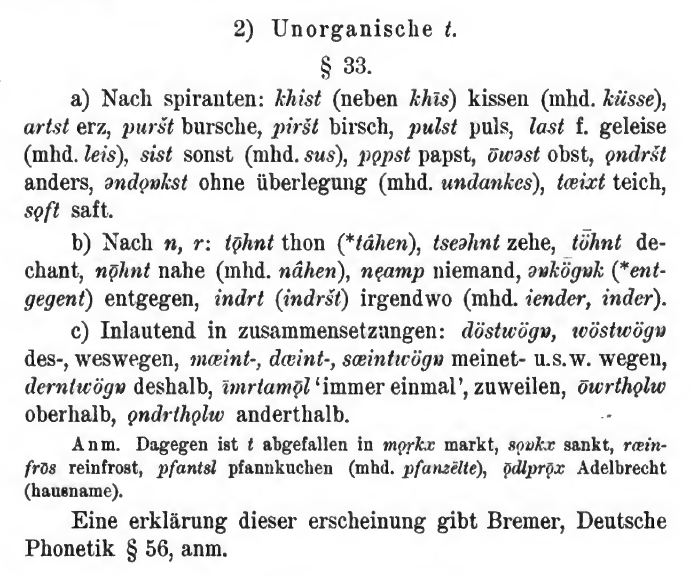It’s always a pleasure to have a dialect word that properly belongs in a garden, and this one definitely does. I think the written form probably has an <ö> but is pronounced with an unrounded vowel, hence the <e> in “Merdlan.” I had no idea what this way when I heard first it (on April 25, 2021: Let’s be precise). The informant told me what the word means, thus making this entire process much easier. Sometimes the initial difficulty with figuring out the orthography can be a bit daunting and then impedes progress. Without being able to look up a word, it’s hard to find it (cue some sort of witty remark).
Carrot. It means carrot. I’ll end the suspense. Carrot. You can also say “die Karotte” in German, but our word’s similarity to “die Möhre” (carrot) is different enough as to raise one or more eyebrows. Let’s see what we can find in a dictionary dive:
- Prof. Heinz-Dieter Pohl’s Kleines Kärntner Wörterbuch identifies “das Mērle” as the dialect term for “Karotte, Möhre.” That gives us a version with an <ē>, so that’s helpful. This sound change reflects a common sound change in Carinthian German, which according to Südbairisch in Laut und Schrift (Arnulf Pichler-Stainern, 2008, Verlag Johannes Heyn), is a feature (Eng. unrounding, Ger. Entrundung) typical of the entire Bavarian dialect region (152).
- Anton Überfelder’s Kärntnerisches Idiotikon lists “Merlan” for “die gelben Rüben.” The difference between a “gelbe Rübe” and a “Karotte” is unclear to me at the moment. My initial inclination is that they’re likely cultivars of the same species. More updates on this as I tease it out. Here we see the diminutive and plural suffixes <-l-an> that round out the ending of the word. Another <e> further confirms that the unrounded version of the standard <ö> since 1795 (the publication date of this dictionary).
So, where does the <d> come from? It’s in neither of the dictionary entries above nor in the standard form. For good measure, let’s start filling in some other southern Bavarian dialect areas to see if we see a pattern.
- In Das Mühlviertel in seiner Sprache “Juiwėgga Dudn” by Edda Seidl-Reiter, “Meran” is listed for “Karotte, Möhre.” Still no <d>.
- In Sprechen Sie Kärntnerisch: Ein Sprachführer für Einheimische und Zugereiste by Beatrix Schönet and Günther Schönet (2004, Verlag Carl Uuberreuter, Wien), we find “Meale” for “Karotte” (no mention of “Möhre”).
So, let’s see if there’s a reason why there’s a <d> “Merdlan.”
After looking in a couple of grammar books on Bavarian and Carinthian German, I happened upon an article by Primus Lessiak on the Carinthian dialect of Pernegg. The description of an inorganic /t/ (a type of epenthesis called excresence) seems like it might offer an explanation as to why there is a dental stop in “Merdlan”–the caveat being the need to explain why <d> is there and not <t>.

I’m fairly certain I’ve seen this explained elsewhere, so there’s more sleuthing to do. I’ll pursue this further once I’ve tracked down the text by Bremer that’s mentioned in the last line!
~
February 29, 2024
After a chance encounter with a native-speaker from the Lavanttal, it occurred to me that the <d> is possibly an alveolar tap /ɾ/ and not a dental sound at all. This requires, as always, further investigation but seems promising. I’ll check with other native speakers to see if <d> is being realized as a tap.
N.B. I also learned the singular form for carrot without the diminutive suffix is “a Mean” in the Lavanttal. It’s always nice to find gaps in my knowledge; to wit, <more> is the Old English lexical item for “carrot, parsnip,” one which perhaps was lost given the comparative “more” overshadowed it (or uprooted it?).
